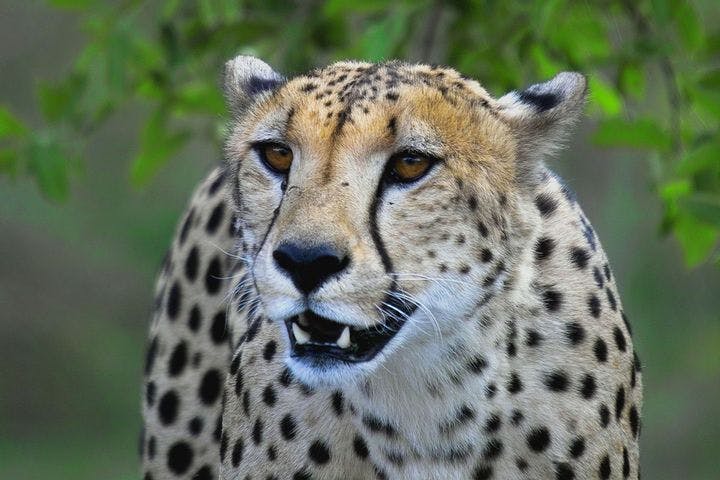Fall 2011
Animals Are Us
– Emily Anthes
For humans, driving other species out of our lives has had some unintended consequences.
For humans, nature has never been less threatening. We have conquered many of the diseases that felled our ancestors when they were half as old as the average person lives to be now, and few people die anymore in the jaws of predators. Antibiotics keep bacteria at bay, and the spread of cities and towns has pushed lions and tigers and bears away from our doors. We call this progress. Who would want to go back to, say, a time before penicillin?
But driving other species out of our lives has had some unintended consequences, argues biologist Rob Dunn in his provocative book The Wild Life of Our Bodies. For most of human history, we lived in proximity to countless other species. We evolved in concert with these life forms; everything from the tiniest microbes to the most fearsome predators shaped the bodies and brains we’re walking around with today. “What happens,” Dunn asks, “when humans leave behind the species their bodies evolved to interact with, whether they be cheetahs, diseases, honeybees, or giant sucking worms?”
The answers Dunn provides aren’t pretty. Without these other life forms, he argues, many features of our own bodies have “become anachronistic or worse.” The unlikely Exhibit A: Crohn’s disease, a chronic inflammation of the bowel that is on the rise in developed nations. Crohn’s and other autoimmune disorders are most common in exactly those places where public health seems to be most advanced—where, for instance, the intestinal parasites that plagued humans for much of history, such as hookworms and tapeworms, have become staggeringly rare. What if, scientists wondered, the absence of these parasites was somehow leaving us more vulnerable to various maladies of the immune system?
The idea sounds crazy—and the experiments conducted to test it even crazier. In 1999, one scientist enlisted 29 patients with intractable Crohn’s and asked them to infect themselves with parasites. Each swallowed a glass of whipworm eggs. Six months later, after the worms had had a chance to take up residence in these patients’ guts, 21 of the volunteers were symptom free.
Soon, other researchers were linking most or all autoimmune diseases to our missing parasites—as well as many allergy and asthma cases. Reintroducing intestinal worms has been shown to alleviate the symptoms of inflammatory bowel syndrome, diabetes, heart disease, and multiple sclerosis. Whatever the exact mechanism—scientists are still working it out—intestinal parasites appear to help train the immune system to work properly. (Perhaps, without parasites, the immune system looks for something else to attack—such as the body itself.) But prescribing parasites is still a counterintuitive and controversial idea that doctors and patients find hard to swallow.
The disappearance of our intestinal parasites is but one stop on Dunn’s breathtakingly broad look at the other species that have shaped human evolution. He moves seamlessly from the physiology of the digestive system to the circuitry of the brain. He explains, for instance, how the disappearance of most of the animals that preyed on humans has left us with outdated fear circuitry. (Primed to detect threats that no longer exist, some brains remain on hyperalert, giving their owners chronic stress and anxiety disorders.)
Dunn does this all in prose that not only evokes the wonder of scientific discovery but illuminates the human struggles behind it. Though the picture he paints is sometimes bleak, he leaves the reader with a bit of hope. We needn’t restore our environments to their original wild state, Dunn says, and it’s a good thing, since that would be nearly impossible. Instead, we could embark upon some targeted rewilding, reintroducing specific parasites to our guts or chugging down cocktails of beneficial bacteria. It wouldn’t hurt to curb our use of antibacterial soaps, as well as antibiotics and other medicines, since they destroy bacteria indiscriminately, without consideration of whether some of the bugs might do us good.
And we could create natural oases, such as urban farms, which could bring certain plants and animals back into our lives. “Given the choice of which and how many species to live around (a choice we still have, though not forever), why not consciously garden a greater diversity of life around us?” he writes. It’s a tall order, but Dunn makes a compelling case that our health and happiness may depend upon it.
* * *
Emily Anthes is a science writer who lives in Brooklyn. She is working on a book about biotechnology and the future of animals.
Reviewed: The Wild Life of Our Bodies: Predators, Parasites, and Partners That Shape Who We Are Today by Rob Dunn, Harper, 2011, 290 pp.
Photo courtesy of Flickr/Arno Meintjes
